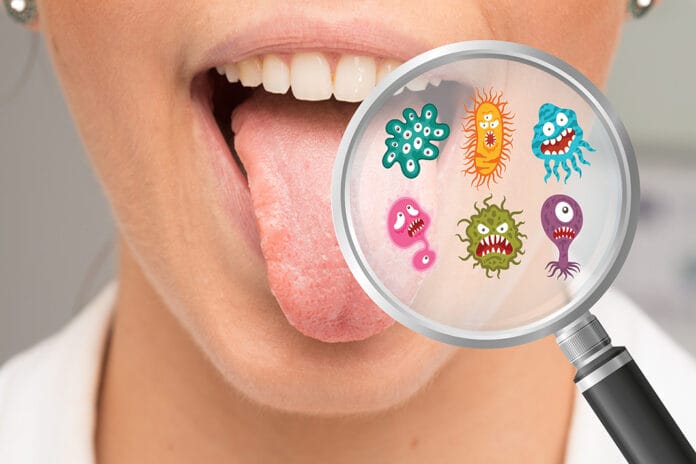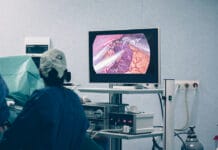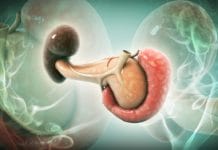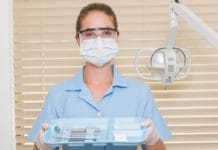The human mouth is a sodden ecosystem housing billions of microorganisms − mostly bacteria − burrowing in our gingiva, living within plaque, and surviving on our tongues. Dental plaque and the surface of the tongue are among the densest microbial habitats on Earth.1 In fact, 100 billion organisms exist per gram of plaque.1 Scientists have unveiled over 700 different species that colonize in our oral cavities. While some of these bacteria are part of a normal flora, others can become problematic to the overall health.
While this information doesn’t seem very profound to most of the dental world, to the average patient, this is surmounting. We loyally educate our patients on the importance of proper oral hygiene without fail. But do we actually comprehend the complexity of the oral microbiome? Delving a smidge deeper into the fascinating details of the human mouth is actually very intriguing and astonishing.
Colonial Expansion
Jessica Mark Welch of the Marine Biological Laboratory in Woods Hole, Mass., and Gary Borisy and Floyd Dewhirst of the Forsyth Institute in Cambridge, Mass., call the human mouth a varied and ordered ecosystem and have studied the bacteria found here with great intensity.1 By studying mouth-related bacteria, they are able to gain a better comprehension of how bacteria organize themselves in other ecosystems in the world.
Welch comments, “We expected more big wads of bacteria, and it was really surprising to see how organized they are and how they work together.”1
Collectively, they have discovered that bacteria colonizes into nine different sites within the oral cavity (tongue, buccal mucosa, tonsils, keratinized gingiva, throat, tonsils, saliva, supragingival plaque, subgingival plaque, and palate). This research has concluded that bacteria structure differently by creating vastly different communities in each of the nine sites. For example, despite the fact the tongue contacts the hard palate often, these two sites have completely separate variations of bacterial communities. If a swab was taken from just one site, it is with 100% certainty that the site could be identified solely on the bacterial community found in that location.
Who’s Who in Bacteria
While some bacteria in the mouth are necessary for metabolism and absorption of the nutrients, there are others that can inflict harm. Bacteria have multiple personalities and, depending on the host, can behave differently. For example, bacteria in plaque can be more resistant to antibiotics and turn on parts of their metabolism only in this biofilm. Interestingly enough, dental biofilm is comprised mostly of DNA.
Corynebacteria is the bacteria believed to extract the calcium from saliva, creating the calculus that dental hygienists so diligently remove. This cone-shaped, slow-growing bacterium colonizes on the hard surface of the teeth by gluing themselves to the enamel. This bacterium is also the foundation of the communities they help other organisms inhabit. In other words, they are the oak tree of the forest.
Streptococcus alone is a harmless bacterium; however, when fed sugar, it can create carious lesions by forming lactic acid. If these bacteria get in our bloodstream, they can contribute to heart disease. When Streptococcus is attached to Fusobacterium nucleatum, it can invade the immune system by entering through the cheek cells. Research has discovered that this is a commonly found cell in colon cancer, the second leading cause of cancer death in the U.S.2
Streptoccus mutans are transferred to babies and children most often from their mothers during birth or shortly thereafter. However, one study concludes that these caries-causing bacteria are also transmitted from peers. Children frequently interacting with other children may contract these bacteria from one another. Forty percent of the subjects included in this study did not share S. mutan strains with their mothers, which leaves open the possibility this bacterium was contracted elsewhere.3
Close Contact
Several articles have been shared across the walls of social media in reaction to this particular subject. While a child is most likely already harboring bacteria contracted from their mothers or other family and friends, it still is certainly wise to avoid kissing a child directly on the lips. One case that instilled fear in many parent’s minds was that of 18-day old Mariana Swift, who died from viral meningitis caused by HSV type 1.
Herpes simplex type 1 is commonly at fault for creating cold sores. Both of Mariana’s parents tested negative for HSV Type 1, leaving the assumption that this virus was transmitted by a kiss from a close family or friend. There is only a 10% chance of HSV contraction after birth.4 However, maybe that margin is still dangerous enough to avoid any possible chance of shared bacteria.
Because the oral cavity is characterized by a stable environment, any imbalance allows for oral disease such as periodontal disease. Porphyromonas gingivalis is a commonly known bacteria contributed to periodontal disease. This periodontopathic bacterium was found in 85.75% of subgingival plaque samples from patients with chronic periodontitis.5 Researchers have also found a strong link between this particular bacteria and Alzheimer’s disease. A study revealed that Alzheimer patients with chronic periodontitis (CP) had a notable decline in cognition compared to those who did not have CP.6
I simply couldn’t go without mentioning our furry friend’s mouths. Again, social media has been home to the commonly shared article that discourages sloppy kisses from dogs. While this decision is personal, it should be noted that comparing human to canine mouths is like comparing apples to oranges.
While humans’ and dogs’ mouths are equally inhabited by vast arrays of bacteria, some of which are the same, it should be mentioned that the bacteria in a dog’s mouth is not zoonotic. However, if your pooch is fed a raw diet, you do have an increased risk of Salmonella infection.7 And if your furry friend makes a habit of snacking in the litter box, then you have a higher probability of contracting E. Coli.
The human mouth is truly remarkable, and the bacteria that call it home are equally substantial. As researchers learn more about the bacteria in the oral cavity, health-care professionals can better educate and treat patients. Afterall, the mouth is the gateway to the human body.
Before you leave, check out the Today’s RDH self-study CE courses. All courses are peer-reviewed and non-sponsored to focus solely on high-quality education. Click here now.
Listen to the Today’s RDH Dental Hygiene Podcast Below:
References
- Brown, E. By Studying Mouth Bacteria, Scientists Hope to Learn the Secrets of Microbiomes. Smithsonian. 8 Nov. 2019. Retrieved from www.smithsonianmag.com/science-nature/studying-mouth-bacteria-scientists-hope-learn-secrets-microbiomes-180973509/
- How A Common Oral Bacteria Makes Colon Cancer More Deadly. College of Dental Medicine, Columbia University. 4 Mar. 2019. Retrieved from www.dental.columbia.edu/news/how-common-oral-bacteria-makes-colon-cancer-more-deadly
- Research Shows Sharing of Cavity-causing Bacteria May Not Be Only from Mothers to Children. ScienceDaily. 25 July 2016. Retrieved from www.sciencedaily.com/releases/2016/07/160725105219.htm
- Stringer, D. Kissing Babies: Kisses That Kill: The Risks of Kissing Babies With HSV-1. Kid Nurse. 20 Feb. 2019. Retrieved from www.kidnurse.org/kissing-babies-risk/
- How, K.Y., et al. Porphyromonas Gingivalis: An Overview of Periodontopathic Pathogen below the Gum Line. Frontiers in Microbiology. 9 Feb. 2016; 7: 53. Retrieved from www.ncbi.nlm.nih.gov/pmc/articles/PMC4746253/
- Dominy, S.S., et al. Porphyromonas Gingivalis in Alzheimer’s Disease Brains: Evidence for Disease Causation and Treatment with Small-Molecule Inhibitors. Science Advances. American Association for the Advancement of Science. 1 Jan. 2019; 5(1). Retrieved from https://advances.sciencemag.org/content/5/1/eaau3333
- Burke, A. Is a Dog’s Mouth Cleaner Than a Human’s Mouth? American Kennel Club. 20 July 2017. Retrieved from https://www.akc.org/expert-advice/health/is-dogs-mouth-cleaner-than-humans/









